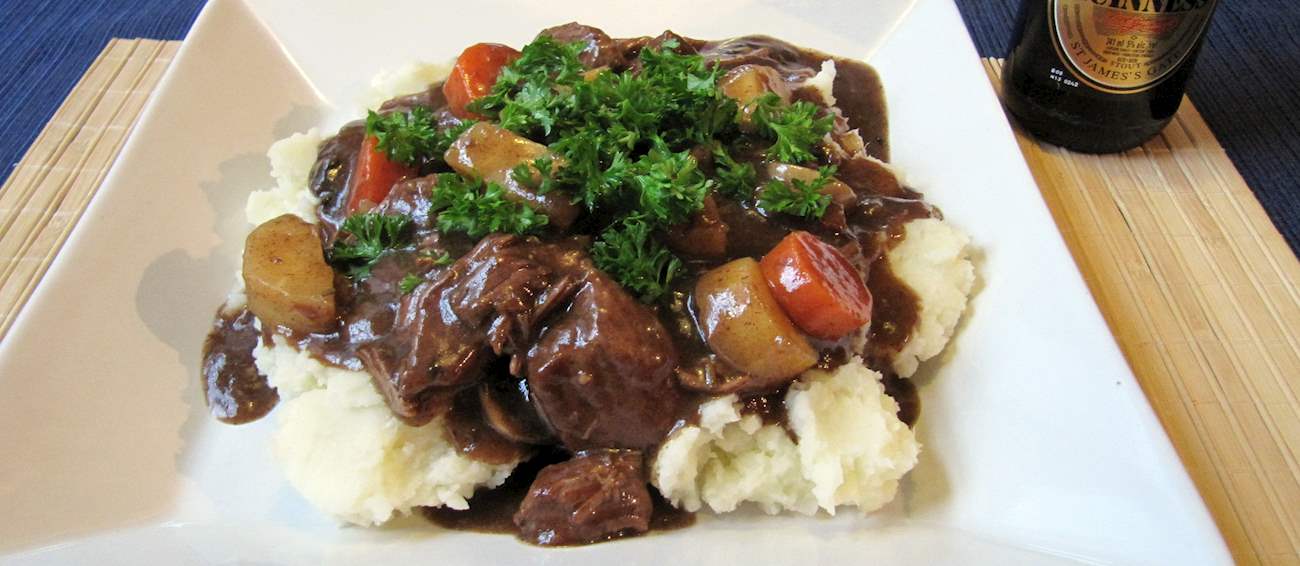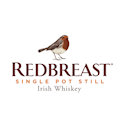TABLE OF CONTENTS
Best Irish Foods
Beef and Guinness pie is essentially beef and Guinness stew placed into a pastry base and topped with a pastry lid. The pie is baked until it's golden brown and it's known as a perfect dish for cold autumn days. The filling is typically made with beef cubes, mustard powder, oil, onions, celery, carrots, Guinness, beef stock, redcurrant jelly, bay leaves, parsley, and thyme.
It's cooked slowly in order to result in perfectly tender meat. The flavors of Guinness permeate the beef, while the vegetables produce a thick gravy. If there's any leftover gravy after the pie has been baked, it's usually poured into a jug and served with the pie.
MOST ICONIC Beef and Guinness Pie
View moreMAIN INGREDIENTS
This traditional Irish stew is made with cubes of beef, onions, bacon, tomato paste, stock, Guinness stout beer, and vegetables such as carrots, potatoes, and celery. The stew is flavored with bay leaves, thyme, salt, garlic, and black pepper, while flour is added as a thickening agent.
It should be cooked very slowly over low heat until all the flavors are thoroughly combined. Beef and Guinness stew can be served with biscuits or Irish soda bread on the side, and it is recommended to prepare it on colder days or for St. Patrick’s Day.
This flavorful dish consists of seafood such as salmon, prawns, white fish, and haddock, paired with milk, cream, and vegetables such as onions, potatoes, carrots, and garlic. The chowder is popular both as a refreshing course in the hot summer months, and a rich, comforting winter dish.
It is recommended to garnish the bowl of chowder with some fresh, finely chopped parsley.
MOST ICONIC Irish Seafood Chowder
View moreIrish breakfast is a traditional meal consisting of fried eggs, vegetables, potatoes, and meats such as bacon, sausages, and both black and white puddings. The large meal is almost always served with Irish soda or brown bread, a cup of tea, and a glass of orange juice on the side.
All of the ingredients are most commonly fried in creamy butter. Originally, the breakfast was invented as a way to prepare the people for a day of hard work on the farm, and the meal was especially popular on cold winter mornings. Today, its huge size is making it somewhat impossible to consume on most working day mornings, so it is usually prepared on Sunday morning (or Christmas morning, when it's especially popular).
Dubliner is an Irish cheese produced in County Cork. The cheese is made from cow's milk. Its texture is firm, smooth, and crystalline, while the flavors are nutty, sharp, and sweet. Dubliner has a natural rind, and today it is available in a wide variety of flavors.
The cheese was originally invented by John Lucey, who still keeps the secret recipe. It is recommended to serve the Dubliner with Cabernet or a pint of Guinness beer. Alternatively, it can be melted between slices of crusty brown bread.
Pair with
Irish brown bread is a variety of soda bread hailing from Ireland. It's made with all-purpose flour, whole wheat flour, salt, baking soda, rolled oats, buttermilk (for flavor and moisture), and molasses (for caramelization and color). Once prepared, the dough is shaped into a ball which is pressed, then decorated with a cross incision on top.
This rustic bread is baked until the loaf sounds hollow when tapped on the bottom. The cross on top of the bread has its purpose – the heat will penetrate it, and the center will then bake well. In the country, this bread is a staple in pubs and restaurants, and it's often paired with Irish butter and fruit jam.
Irish stew is a traditional folk stew that first appeared at the beginning of the 19th century and was developed out of necessity to make a meal out of available, leftover ingredients. Originally, the stew was made only with mutton, onions, potatoes, and sometimes barley, while lamb meat and other root vegetables like carrots, turnips, and parsnips were added later.
It is said that goat meat was also used in the past, but besides the previously mentioned mutton and lamb, beef is a common addition in today's recipes. Given that the meat used in the dish is chewy and hard, usually bone-in, the stew is cooked slowly for a couple of hours so that the meat turns tender and releases the fat into the stew, thus enhancing the flavor of the entire dish.
MOST ICONIC Irish stew
View moreThe Irish breakfast roll is a filling, nutritious sandwich consisting of a bread roll filled with a number of ingredients that are usually a part of the traditional full Irish breakfast, such as bacon, mushrooms, sausages, pudding, and brown sauce.
In Ireland, it is often bought at supermarkets or gas stations since it is meant to be consumed on-the-go. Due to its high nutritional value, it is commonly known as the ultimate hangover cure in the country.
MAIN INGREDIENTS
Mussels in cream is a traditional dish originating from Ireland, and it's especially popular in Donegal and Cork. Although there are many variations on this simple dish, it's often made with a combination of scrubbed and debearded mussels, butter, heavy cream, flour, salt, and pepper.
The mussels are heated in a skillet until the shells open, and any unopened mussels are discarded. A roux is made from butter and flour, and it's then mixed with a bit of water and heavy cream until the sauce thickens. The sauce is seasoned with salt and pepper and it's then mixed with the mussels and their juices.
Colcannon is a traditional dish made by mashing together previously cooked potatoes with kale or cabbage, while the creamy consistency is achieved by adding milk and butter, or cream. Salt and pepper are the only seasonings, and colcannon often contains additional ingredients such as chives, onions, scallions, and leeks, but many also like to add bacon for flavor and texture.
The dish is traditionally prepared for Halloween and is used in many of the Irish fortune-telling traditions. As far as the origin, the name is derived from the Gaelic word cál ceannann, meaning white-headed cabbage. Typically, the dish is served either as an individual meal or as an accompaniment to meat, often with a knob of butter in the middle.
TABLE OF CONTENTS
Best Irish Food Producers
Redbreast is a brand of single pot still Irish Whiskey produced by the Irish Distillers subsidiary of Pernod Ricard. It was originally bottled by Gilbey's, a Dublin spirits merchant using distillate sourced from Jameson's Bow Street Distillery.[1] In the 1980s, the brand was purchased by Irish Distillers, the producer of Jameson.
It is the largest selling single pot still Irish whiskey in the world.
AWARDS

SFWSC - San Francisco World Spirits Competition - Double Gold
2024, 2023

ISC-International Spirits Challenge - Double Gold
2024

ISC-International Spirits Challenge - Double Gold
2021, 2020
Midleton Very Rare is a prestigious series of Irish whiskeys produced by the Midleton Distillery, located in County Cork. The Midleton Very Rare series, launched in 1984 by Master Distiller Barry Crockett, is an annual release of carefully selected and blended vintages.
Each edition reflects a unique flavor profile, continuing a legacy of quality under current Master Distiller Kevin O'Gorman.
AWARDS

NYWSC - New York World Spirits Competition - Double Gold
2024

ISC-International Spirits Challenge - Double Gold
2020, 2019

ISC-International Spirits Challenge - Gold
2024
BEST Midleton Very Rare Spirits
Kerrygold is one of the most well-known Irish dairy brands, recognized worldwide for its creamy butter and premium cheeses. Founded in 1961 by An Bord Bainne (now known as Ornua), Kerrygold has become synonymous with authentic dairy products made from the milk of grass-fed cows raised on Ireland’s natural pastures.
What makes Kerrygold truly special is the unmatched quality of its milk. The cows producing milk for Kerrygold graze on lush, green Irish meadows for most of the year, feeding on nutrient-rich natural grass. This pasture-based diet gives the milk a rich flavor and contributes to the distinct golden-yellow color of Kerrygold butter.
BEST Kerrygold Butters
Ornua Cooperative is an Irish agri-food cooperative that markets and sells dairy products on behalf of its members, who are mainly dairy processors and Irish dairy farmers. It operates under the Kerrygold brand, which is known for its butter and cheese.
Ornua exports to over 110 countries and has production facilities and sales offices around the world, including in the United States, the United Kingdom, Germany, the Middle East, and Africa.
AWARDS
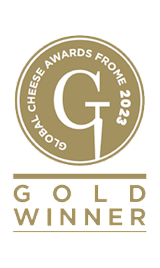
Global Cheese Awards - Gold
2024, 2023, 2018
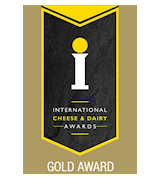
International Cheese Awards - Gold
2024, 2023, 2022, 2019

Global Cheese Awards - Best
2018
BEST Ornua Cheeses
Waterford Whisky is an Irish distillery renowned for its terroir-driven single malt whiskies. Founded in 2016 by Mark Reynier, the distillery emphasizes the influence of soil, microclimate, and location on barley, the primary ingredient in whisky.
By collaborating with over 100 Irish barley growers, Waterford produces distinct Single Farm Origin whiskies, each reflecting the unique characteristics of its source farm.
AWARDS

SFWSC - San Francisco World Spirits Competition - Double Gold
2024

NYWSC - New York World Spirits Competition - Double Gold
2023

Bartender Spirits Awards - Gold
2023
BEST Waterford Distillery Spirits
Teeling Whiskey Distillery, established in 2015, is the first new distillery in Dublin in over 125 years, reviving the city's rich whiskey-making heritage. Located in the historic Liberties area, it offers visitors a comprehensive experience of the whiskey production process, from grain to glass.
The distillery produces a range of award-winning Irish whiskeys, including Small Batch, Single Grain, Single Malt, and Single Pot Still expressions.
AWARDS

SFWSC - San Francisco World Spirits Competition - Double Gold
2024, 2023

NYWSC - New York World Spirits Competition - Double Gold
2023

SWSC - Singapore World Spirits Competition - Double Gold
2023
BEST Teeling Whiskey Company Spirits
Coolattin Cheddar is a cheese producer that specializes in crafting traditional cheddar cheese. They focus on using milk from their own herd of pasture-fed cows. The cheese is known for its distinct, rich flavor and is matured for a minimum of six months.
The company emphasizes sustainable farming practices and high animal welfare standards in their production process.
AWARDS
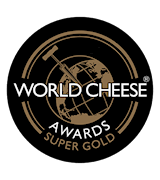
World Cheese Awards - Super Gold
2023
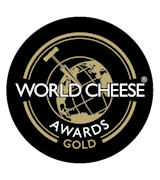
World Cheese Awards - Gold
2024
BEST Coolattin Cheddar Cheese Cheeses
AWARDS

Global Cheese Awards - Gold
2023, 2019

International Cheese Awards - Gold
2024, 2023, 2022, 2019
BEST Carbery Group Cheeses
AWARDS
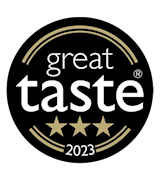
Great Taste Awards - 3 stars
2024, 2023
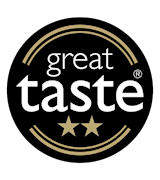
Great Taste Awards - 2 stars
2023
BEST Cork Chilli Company Condiments
Cashel Farmhouse Cheesemakers is located in Fethard, County Tipperary, Ireland. The company is known for producing Cashel Blue, a semi-soft blue cheese, which was Ireland’s first blue cheese, introduced in 1984. The cheese is still made on the same farm by the Grubb family, who are the original founders.
Beyond Cashel Blue, the company also produces Crozier Blue, a sheep's milk blue cheese.
AWARDS

International Cheese Awards - Gold
2023, 2022, 2019
TABLE OF CONTENTS
Best Irish Food Products
AWARDS

SFWSC - San Francisco World Spirits Competition - Double Gold
2024

ISC-International Spirits Challenge - Double Gold
2024

ISC-International Spirits Challenge - Double Gold
2021
AWARDS

SFWSC - San Francisco World Spirits Competition - Double Gold
2024, 2023

ISC-International Spirits Challenge - Double Gold
2021

IWSC- International wine & spirit competition - Spirit Gold Outstanding
2024, 2023, 2022
Knappogue Castle offers a distinguished range of limited-edition single malt Irish whiskeys, each showcasing unique aging processes and cask finishes. Notably, the Knappogue Castle 21 Year Old Single Malt is a marriage of two single malts—one aged 23 years and the other 21 years—both matured in ex-bourbon casks.
This expression is non-chill filtered and bottled at 92 proof, delivering a soft and mellow taste with malty richness throughout.
AWARDS

SFWSC - San Francisco World Spirits Competition - Double Gold
2024, 2023

ISC-International Spirits Challenge - Double Gold
2024

NYWSC - New York World Spirits Competition - Double Gold
2024
AWARDS

SFWSC - San Francisco World Spirits Competition - Double Gold
2024, 2023

ISC-International Spirits Challenge - Double Gold
2020

IWSC- International wine & spirit competition - Spirit Gold
2024
METHOD AND MADNESS Rye & Malt – the first aged experimental distillate release created at the Micro Distillery in Midleton. Innovation is nothing new to Midleton, but the micro distillery has provided the copper canvas for experimentation to run free.
Masterfully created by our next generation of innovative whiskey makers, METHOD AND MADNESS Rye & Malt is a distillate-driven whiskey, bursting with floral notes and a spicy character. The combination of rye with malted barley brightens the whiskey’s naturally wide spectrum of flavours and aromas to evoke notes of lemon balm, white pepper, chili flakes and toasted wood with a lingering finish of spiced fruit.
AWARDS

SFWSC - San Francisco World Spirits Competition - Double Gold
2024, 2023

NYWSC - New York World Spirits Competition - Double Gold
2024

ISC-International Spirits Challenge - Gold
2024
Midleton Barry Crockett Legacy is a distinguished single pot still Irish whiskey crafted in honor of Barry Crockett, the second-generation Master Distiller at Midleton Distillery. This exceptional whiskey is a blend of pot still whiskeys matured exclusively in American bourbon barrels, with a subtle contribution from a pot still distillate aged in an unseasoned American barrel.
Bottled at 46% ABV, it offers an elegant aroma of vanilla and toasted oak, complemented by hints of lime, succulent green berries, pears, and green sweet pepper. The palate reveals light pepper notes alongside fresh citrus flavors, including limes and mandarin orange sweetness, with a touch of cinnamon, vanilla, and oak, reflecting its years spent in American oak.
AWARDS

NYWSC - New York World Spirits Competition - Double Gold
2024

ISC-International Spirits Challenge - Gold
2024
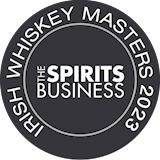
The Irish Whiskey Masters - Gold
2023
Green Spot Chateau Montelena has been finished for 12 months in French oak Zinfandel from the prestigious Chateau Montelena in Napa Valley, California. Zinfandel casks are adding an exciting new dimension to this Single Pot Still Irish Whiskey already renowned for its excellent quality.
This rare cask finish contributes pomegranate, cranberry and maraschino cherry on the nose, a dry note to the silky mouthfeel and the finish combines classic long pot still spice flavours with a delicate wine influence, all in perfect harmony.
AWARDS

SFWSC - San Francisco World Spirits Competition - Double Gold
2024, 2023

The Irish Whiskey Masters - Gold
2022

The Irish Whiskey Masters - Master
2023
Coolattin Cheddar Ltd. produces a cheese known as Mount Leinster Clothbound. This cheese is notable for its rich, mature flavor profile and is recognizable by its distinctive cloth binding, which aids in the aging process, allowing the cheese to develop a unique texture and depth of taste.
Mount Leinster Clothbound is crafted using traditional methods, contributing to its artisanal quality. This cheese is often sought after by connoisseurs who appreciate well-aged cheddars with complex flavors.
AWARDS

World Cheese Awards - Super Gold
2023

World Cheese Awards - Gold
2024
The Dublin Liberties Copper Alley is a whiskey offered by The Dublin Liberties Distillery, known for its rich heritage and bold character. The whiskey is crafted in small batches, delivering a smooth and refined taste with hints of vanilla, oak, and spice.
It offers a unique experience, showcasing the quality and craftsmanship of Irish whiskey.
AWARDS

ISC-International Spirits Challenge - Double Gold
2019

ISC-International Spirits Challenge - Gold
2024
Crozier Blue is an artisanal blue cheese produced by J. & L. Grubb Ltd., the same company that created the famous Cashel Blue cheese. This cheese is distinctive because it is made from sheep's milk, unlike Cashel Blue which is made from cow's milk.
The use of sheep's milk imparts a rich and creamy texture to Crozier Blue, along with a slightly sweet and nutty flavor that differentiates it from its cow's milk counterpart. Crozier Blue is characterized by its soft, moist texture and its blue veins that provide a sharp and spicy contrast.
It is named after the Crozier shepherd's crook, reflecting its pastoral origins.
AWARDS
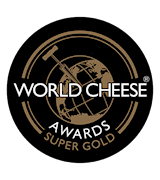
World Cheese Awards - Super Gold
2021
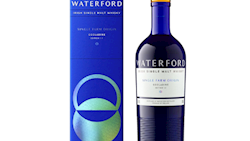

TasteAtlas food rankings are based on the ratings of the TasteAtlas audience, with a series of mechanisms that recognize real users and that ignore bot, nationalist or local patriotic ratings, and give additional value to the ratings of users that the system recognizes as knowledgeable. For the “Top 100 Irish Foods” list until March 27, 2025, 1,070 ratings were recorded, of which 910 were recognized by the system as legitimate. TasteAtlas Rankings should not be seen as the final global conclusion about food. Their purpose is to promote excellent local foods, instill pride in traditional dishes, and arouse curiosity about dishes you haven’t tried.
